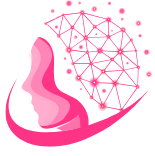There’s no hiding it—
Chatbots have transformed our customer service and the way businesses engage with their customers.
But not every company does a good job at implementing the bots. It’s easy to think of a time you got frustrated with the support system because it didn’t understand you or sounded very robotic.
So, to ensure that doesn’t happen to your brand, we’ve collected 10 chatbot best practices you can use to make your bot development a success.
Let’s jump right into it—what are the best practices in chatbot building?
10 essential chatbot best practices
Natural language processing (NLP) technology, machine learning functionality, and great design are just a few qualities of a successful chatbot. You should think about what users are looking for when interacting with your system.
Usually real-time communication and quick replies are important reasons for visitors to chat with your bots. And to boost customer engagement further you can add GIFs and emojis to the chatbot’s messages. Let’s have a look at ten tips for an effective bot implementation.
1. Pick the right audience and goal
The first essential best practice for chatbots is to clearly define your target audience and goals upfront. Different chatbots will be designed for specific types of users like banking clients, ecommerce shoppers, or beauty salon customers. At the same time, you’ll also need a variety of bots depending on the desired outcomes, for example sales, support, or lead generation.
To implement this tip:
- Identify who exactly you want your chatbot to interact with, including their demographics, psychographics, familiarity with technology
- Determine the key goals for the chatbot —is it for customer support? Sales? Marketing?
Having laser focus on the audience and goals from the start will allow you to design and build a chatbot tailored to meet those specific needs.
Think of it this way. A chatbot designed for millennial consumers interested in ordering food delivery will look very different from one created for IT professionals needing to troubleshoot software issues. The restaurant chatbot may use a very casual, conversational tone with visually appealing menus, while the IT support one will be more technical and focus on efficiently resolving tickets.
A real-life example of this is Sephora’s chatbot that targets younger, millennial beauty shoppers aligned with their goal of product discovery and purchase.
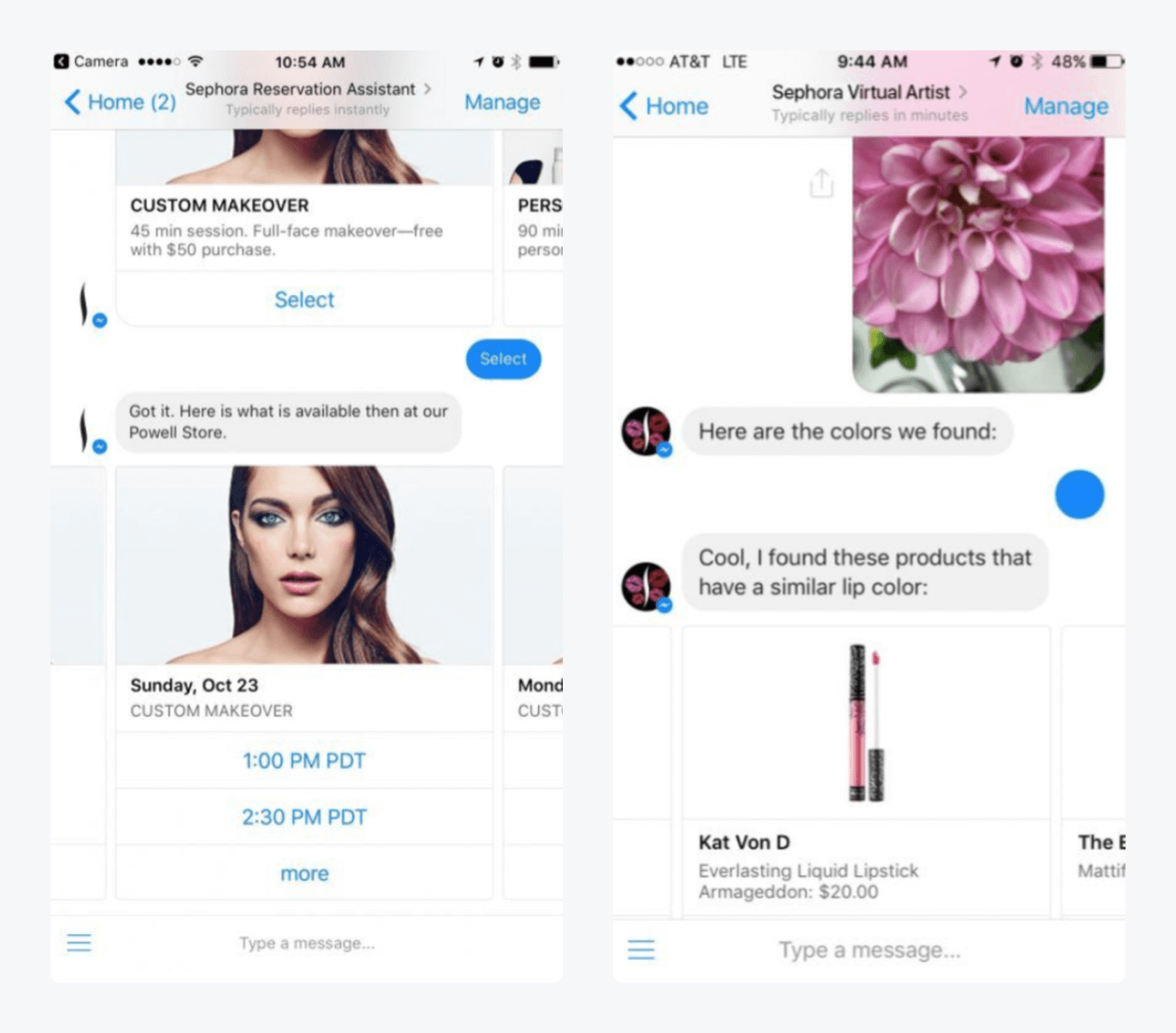
2. Choose the right channels
Another vital best practice is to select the right communication channels for deploying your chatbot based on where your target audience is. This technology can be deployed across many platforms including your websites, mobile apps, messaging platforms, and more.
To implement this:
- Analyze what channels your audience preferentially uses
- If they primarily use mobile apps, then build and integrate your user-friendly chatbot into your mobile app experience
For example, a chatbot for students may work best deployed within a university’s mobile app or Facebook Messenger. At the same time a company providing customer service chatbot will need to prioritize deployment on their website. Meeting your audience where they already are dramatically improves the adoption and engagement.
A real-life example of this best practice is ADT Security chatbot deployed on their website to boost sales:
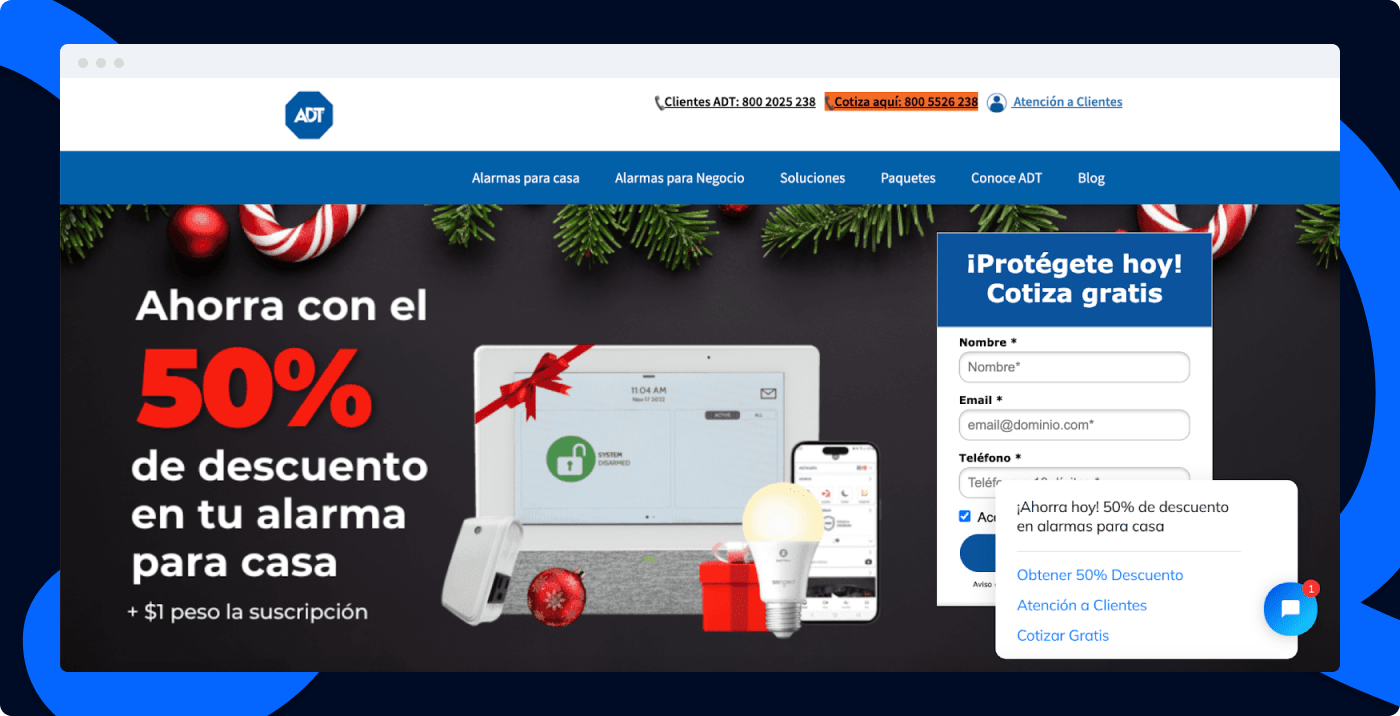
Read more: Check out how ADT Security Service boosted sales and improved customer satisfaction using Tidio chatbots.
3. Pick the right chatbot types for the right job
There are different types of chatbots that excel at specific tasks. It’s crucial to pick the ones that match the jobs you need them to perform.
The main chatbot types are:
FAQ chatbots are good for simple, linear conversations. Keyword recognition works for identifying user intent. Contextual AI can handle complex, free-form conversations. And task-oriented AI chatbots are ideal for executing tasks like bookings or transactions.
So, assess your main use case and pick the bot that can meet your needs. For example, an ecommerce chatbot allows customers to browse and purchase products seamlessly through conversation. On the other hand, a customer support chatbot at a cable company may be better served by a contextual conversational AI that can understand and respond to free-form complaints and inquiries.
As a real-life example we have Mastercard’s finance chatbot. It uses artificial intelligence to handle open-ended queries about products and services, while having scripted flows to securely handle transactions.
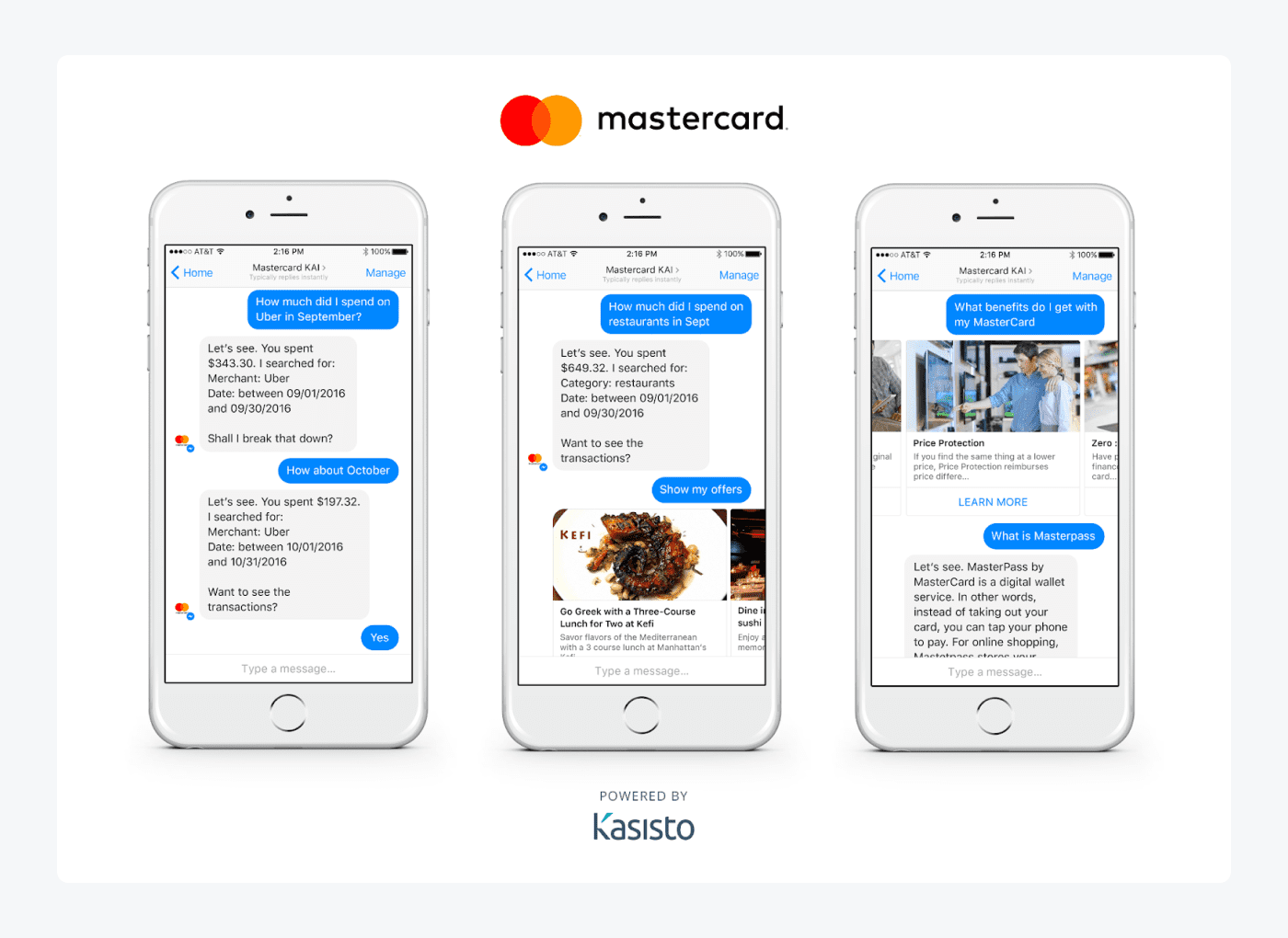
Read more: Learn how to create and manage Tidio flows.
4. Design your chatbot widget with visibility in mind
The visual design and placement of your chat widget are critical for ensuring users actually engage with it. The important thing is that the chatbot needs to be highly visible and accessible while also matching your brand’s design.
To implement this chatbot design best practice:
- Use a contrasting color that stands out from your website
- Place the chat widget in a strategic location that doesn’t require scrolling to find
- Make it appealing but not obtrusive
- Ensure the chatbot interactions match the tone of voice of your brand
Think of a chatbot for a major airline. It could be a smart, AI-powered owl character that slides onto the screen from the bottom right corner, drawing the attention and interest of the website visitors.
Here’s a real-life example of how Strange Cat Toys designed the chat icon to match their brand perfectly:
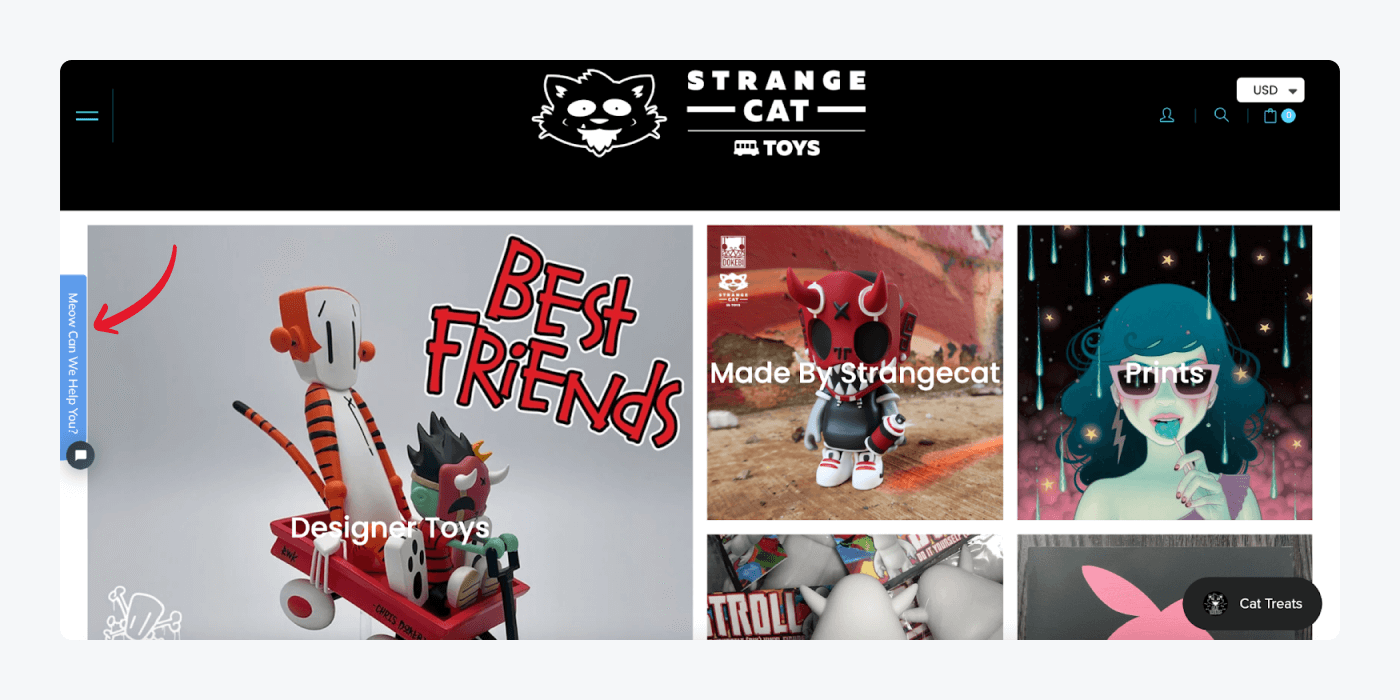
5. Combine AI and rule-based chatbots
Combining different types of chatbots is the best way to meet all user needs. This allows capturing the benefits of AI and the simplicity of a rule-based chatbot.
Here are a few steps you can follow to implement these best practices in chatbot building:
- Design a primary chat flow for common inquiries and tasks
- Then layer an AI chatbot on top that can handle more complex, free-form requests that fall outside the scripted rules
For example, a telecom company’s chatbot may use a rule-based approach to send welcome messages and guide customers through straightforward billing inquiries. However, it could leverage an AI chatbot for assisting with technical support across their numerous product offerings when natural, contextual language is required to understand the specific issue.
eye-oo, an eyewear platform, is one of the businesses that has successfully combined rule-based chatbots with AI. This brand uses the former for lead generation and the latter to answer customer inquiries in natural language.
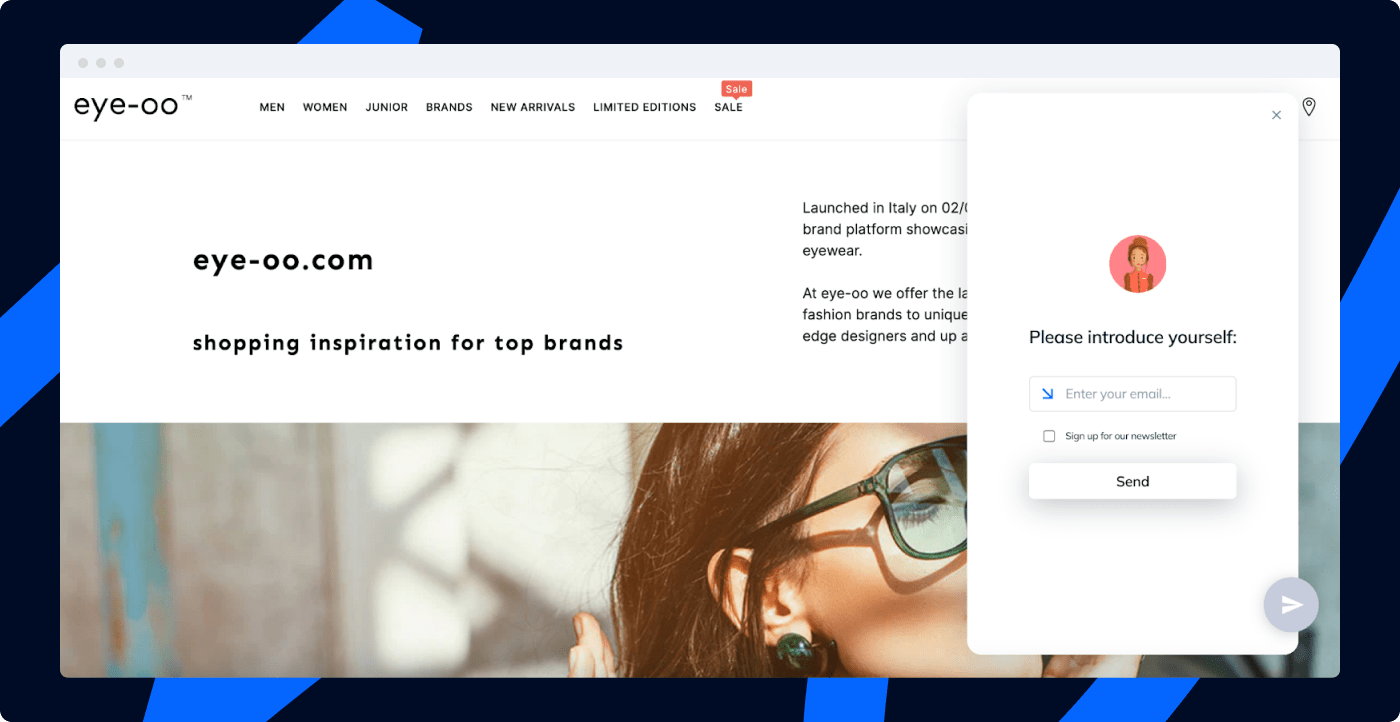
Read more: Learn how eye-oo boosted revenue after implementing Tidio.
6. Decide how to mix chatbots with live customer support
While chatbots can handle many customer interactions and basic workflows, they should be combined with live human support for more complex issues that require a human touch. Finding the right balance and handoff procedures is key to a successful strategy.
To combine chatbots with human agents:
- Set clear thresholds and scenarios for when the chatbot should attempt to resolve an issue itself versus escalating it to a human
- Make the escalation process seamless, with the chatbot providing context to the agent
- Get the chatbot to initially qualify the issue, gather relevant information, and then introduce the human and pass over the conversation thread
For example, a retail chatbot may handle common order inquiries like order status or tracking. But if the customer needs help with a more complex issue, like initiating an exchange, the bot should seamlessly connect the shopper to a live agent already briefed on the situation.
Endeksa is a good real-life example of this. The brand uses their chatbot to collect leads and answer simple questions with an option to route the visitor to the support agent in case the inquiry exceeds the bot’s abilities:
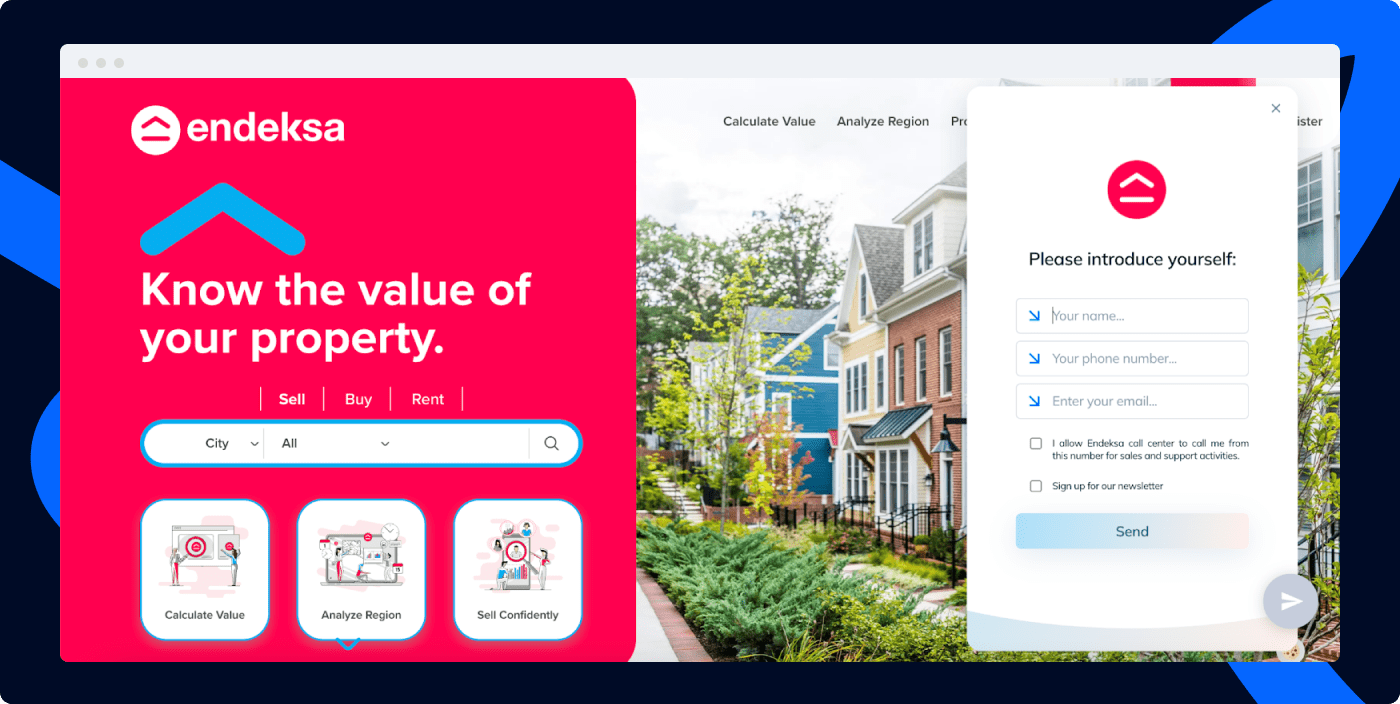
Read more: Find out how Endeksa increased lead generation while decreasing response times using Tidio.
7. Interconnect chatbots with your ecosystem
Your chatbot should be integrated with your company’s broader technology ecosystem. This ensures that all of your systems work well together.
How to implement this chatbot UX best practice? Here are a few steps you can follow:
- Connect your chatbot platform to other systems like knowledge bases, email, helpdesk ticketing, and CRM systems
- Configure fallback rules so that if a rule-based chatbot cannot confidently answer a query, it switches to an AI system that can retrieve relevant information to provide to the customer
- As a last resort, have an escalation path to hand off to a human agent
So, if a customer asks a very specific technical question that the chatbot can’t resolve, it could first attempt to share an article from the knowledge base. If there is no good article match, it could check for open support tickets on the same issue. Failing that, the chatbot should seamlessly transition the conversation to a technical support agent with all conversation details provided.
As a real-life example we can look at Vodafone’s chatbot, TOBi, pulls data from the CRM system and can automatically open telecom support tickets if needed.
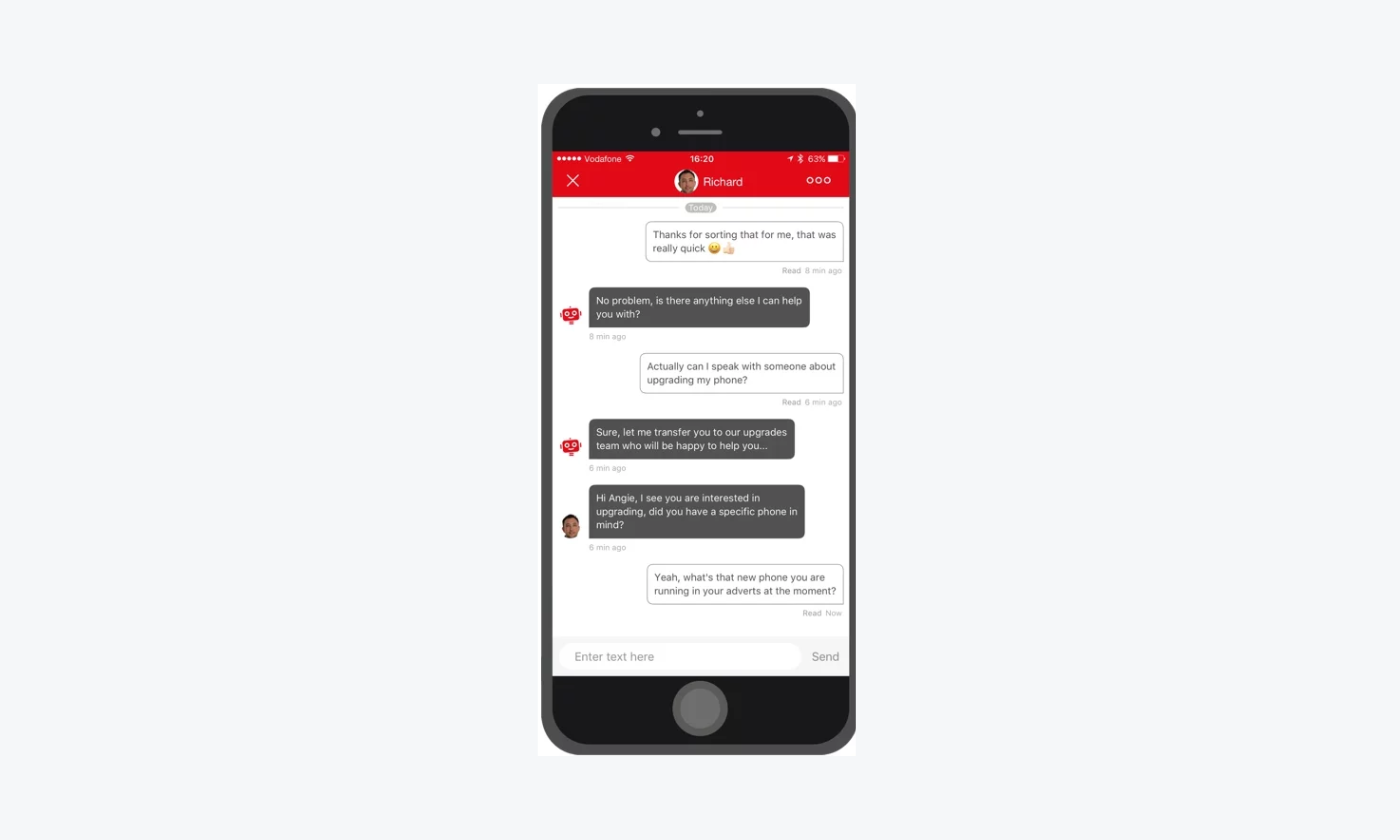
8. Test your chatbot flows
Like any software application, it’s crucial to thoroughly test your chatbot’s conversation flows as well as capabilities before launch and on an ongoing basis after deployment.
You can implement this tip by:
- Setting up a comprehensive testing plan that covers different conversation paths, edge cases, and integration points
- Using tools to automate regression testing of existing flows when new updates are made
- Implementing chat monitoring and analytics to identify issues once the chatbot is live
- Capturing bugs and optimizations in a backlog for continuous improvement
You should also have a mix of developers, domain experts, and potential end-users all participating in testing to get diverse perspectives.
Think of a bank launching a new chatbot for opening accounts. It can script out dozens of different conversation scenarios and hit all requirements including providing disclaimers, identifying verification, and product info. The developers would step through each chat script testing positive and negative cases and tracking issues. Identified problems then get triaged and prioritized for resolution before going live.
Before launch, Coca-Cola built a robust regression testing suite for their AI order chatbot across web and mobile apps.
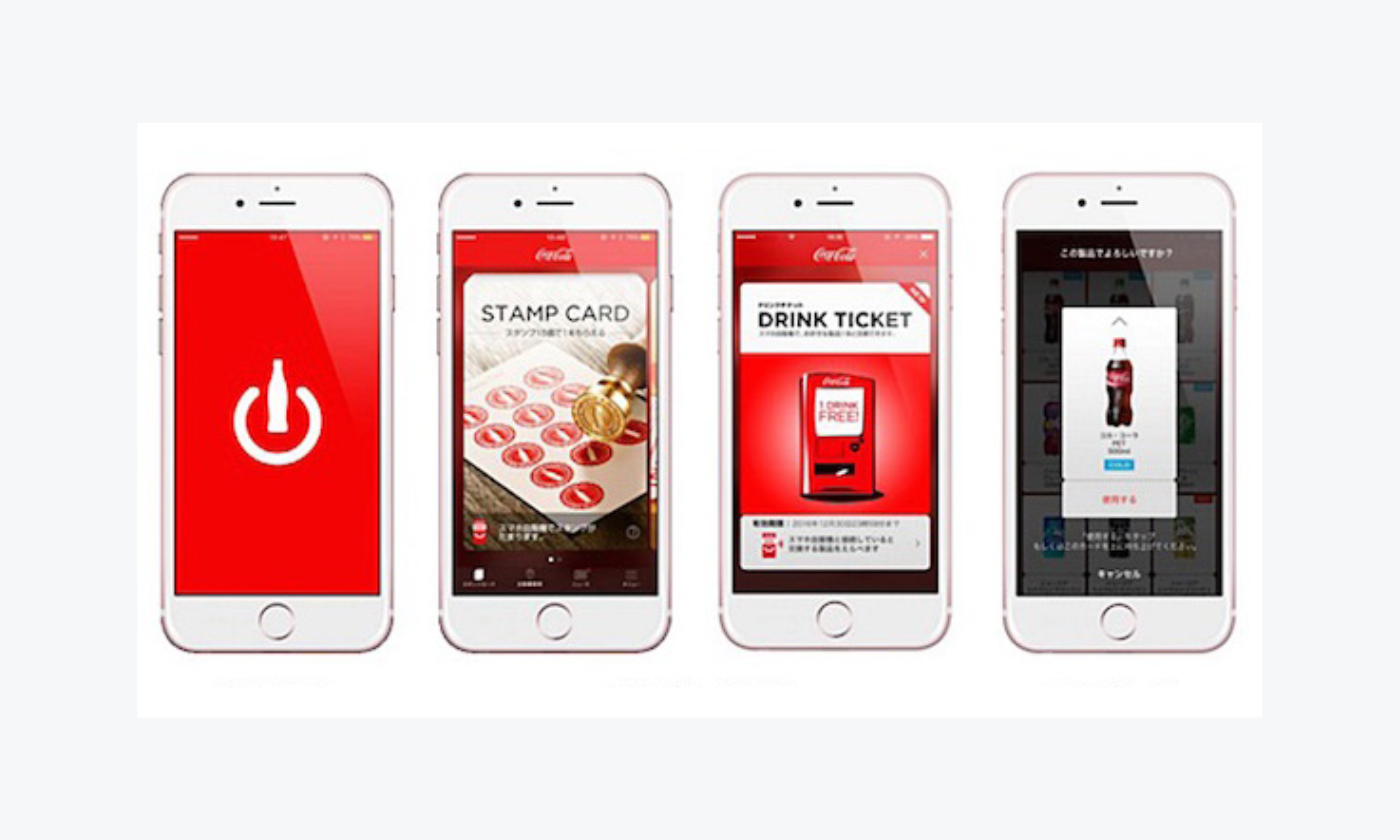
9. Measure the results
To truly understand the impact of your chatbot and identify areas for improvement, it’s essential to continuously measure and analyze key performance metrics.
Here are a few things to do in order to measure results effectively:
- Establish clear goals and KPIs for your chatbot upfront based on your objectives
- Implement comprehensive chatbot analytics tracking across your systems
- Analyze the data regularly to monitor performance against targets
- Go beyond just surface metrics and utilize tools to deeply examine transcripts and pinpoint areas of confusion, drop-off, or failure
- Tie chatbot metrics to broader business metrics like sales, cost savings, etc.
Let’s take an ecommerce company as an example for this. The brand may track metrics like containment rate, cart abandonment rate, average order value from chatbot sales, and customer satisfaction scores. If the business notices a rise in abandonment, agents can dive into the transcripts to identify the specific issues customers are running into and areas for improvement.
Wulff Bellton is one of the companies monitoring the metrics closely. This brand pays especially close attention to the customer satisfaction rate and how the bot affects this KPI.
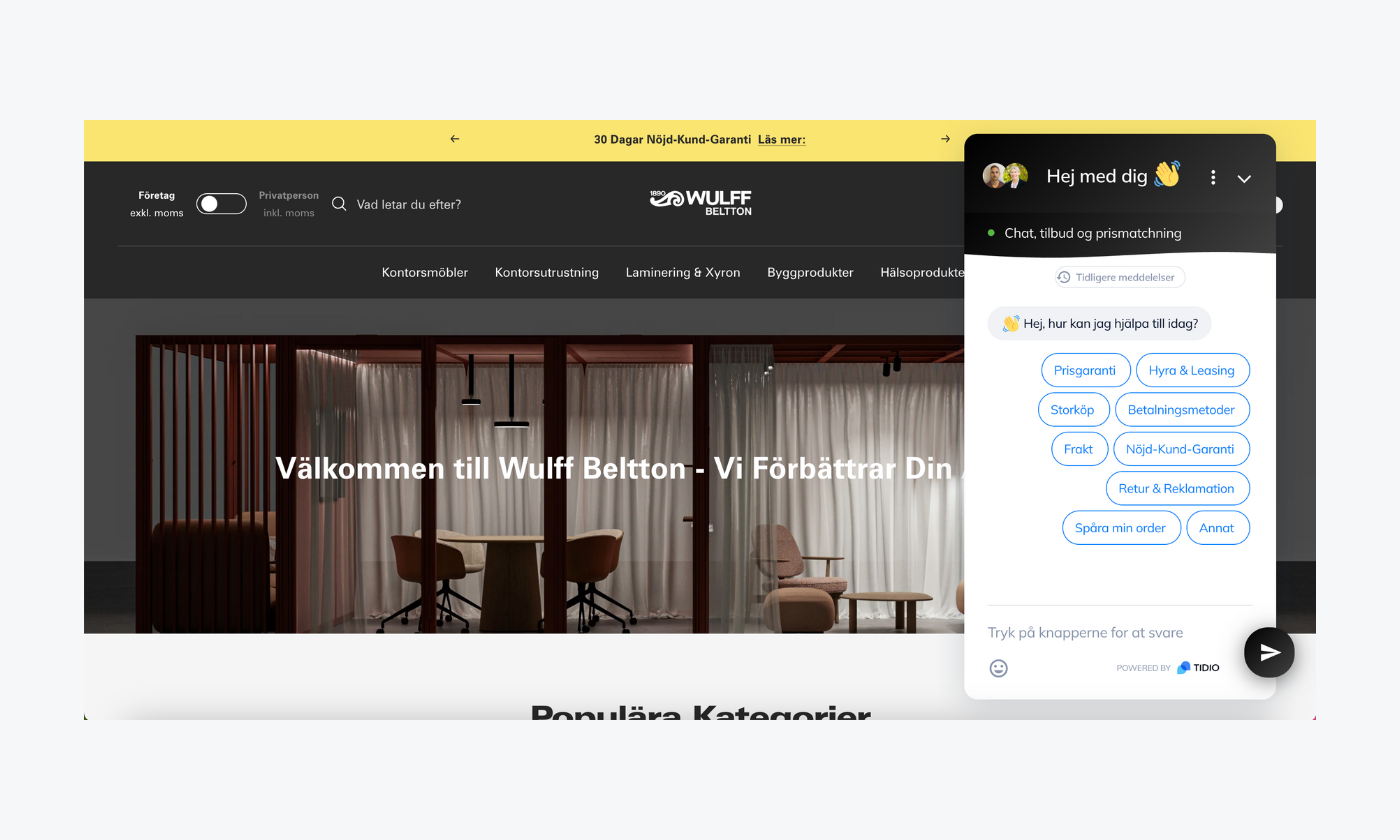
Read more: Learn how Wulff Bellton hit 4.5/5 customer rating after switching to Tidio.
10. Optimize, optimize, optimize
Chatbot development should be an ongoing, iterative process of continuous optimization based on usage data, testing, and customer feedback. Don’t just set it and forget it.
To efficiently optimize your bot:
- Establish a regular cadence to analyze chatbot performance metrics
- Set a time to audit transcript samples, gather customer feedback surveys, and review any incoming requests
- Prioritize the top areas for improvement into a backlog for the chatbot development team
- Implement processes for efficiently making optimizations, for example tweaking NLU models, expanding training data, updating response libraries, and refining chatbot flowcharts
- Check thoroughly chatbot analytics continuously to identify emerging issues to fix
- Stay on top of security and privacy issues
For example, a company using a chatbot to manage FAQs might notice that customers are trying to perform more advanced tasks the chatbot can’t handle. The brand can optimize the bot by expanding the chatbot’s training data and creating new flows to support the additional common scenarios.
By analyzing data, Procosmet decided that the best way to optimize the customer service is to change the chatbot provider.
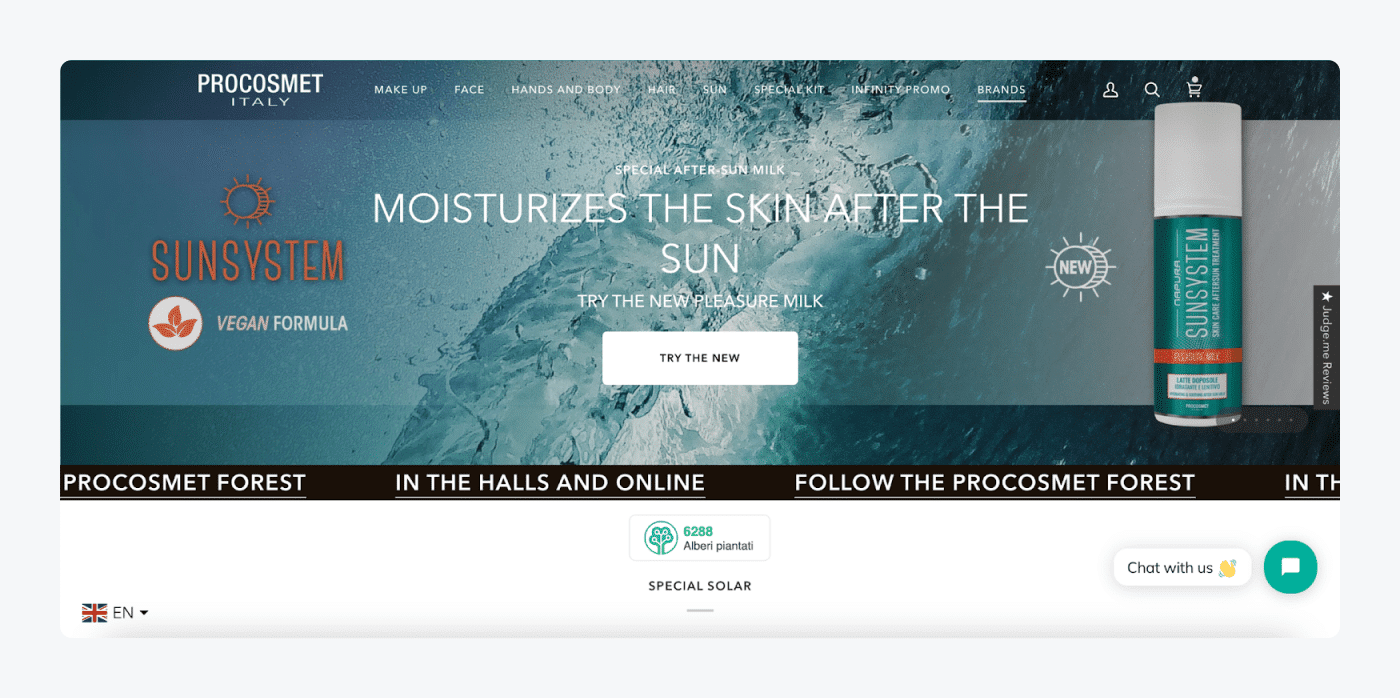
Read more: Learn how Procosmet boosted lead generation and conversion rates using Tidio.
But does it all make a difference? Let’s have a look.
The importance of best practices for chatbot development
If done right, pop-up chat widget can speed up your response time, improve your customer experience, boost your revenue, and more. These are just a few reasons why chatbot building best practices are important. Here’s a bit more details on the benefits:
Improved customer satisfaction
By implementing best practices like choosing the right channels, and offering seamless human handoffs, chatbots provide a better overall experience aligned with customer expectations. In turn, this leads to higher satisfaction, and increased positive reviews.
And according to IBM, businesses that adopt conversational AI and virtual assistants see a 20% increase in customer satisfaction on average.
Higher containment rates
Following best practices around integrations, the conversation design allows chatbots to successfully resolve more queries independently. This increases containment rates and automation, reducing cost while still meeting customers’ needs.
Chatbots developed with best practices can handle over 58% of your tickets with 87% success rate.
Increased sales
Chatbots built with best practices in mind, like specifying goals upfront can drive real revenue impact. Optimized flows lead to higher conversion rates for purchases, upselling, lead generation, and other monetization paths.
In fact, studies show that chatbots can drive sales by up to 20%.
Better user adoption
When chatbots follow UX and design best practices around visibility, accessibility, and channel optimization, they remove barriers to adoption. When the technology is well-designed for users’ needs and preferences, users are more likely to find, understand, and continuously engage with it.
Keep in mind that over 36% of online businesses say that conversational interfaces offer more human-like experiences to users.
Lower support costs
By handling routine queries through an AI-powered chatbot you can reduce the heavy workload of your human agents. This improved operational efficiency allows businesses to lower overall support costs substantially.
And studies show that conversational AI within contact centers can reduce client support costs by up to $80 billion.
By designing chatbots with best practices businesses maximize the benefits in customer experience, sales impact, and operational efficiency. Cutting corners leads to negative user experiences and poor results.
Read more: Explore more chatbot statistics and trends in our study
Chatbot best practices: summary
Chatbot best practices help your business create the best system that users will enjoy. In the long run, this can help you boost sales, improve customer satisfaction, and lower support costs.
Here’s a recap of the best practices we discussed in this article:
- Choose the right audience and goal
- Pick the right communication channels
- Decide on the chatbot types to use
- Design an accessible chat widget
- Combine AI with rule-based bots
- Connect all of your platforms
- Test the chatbot flows in real life
- Measure your results frequently
- Continuously optimize the software
Do you want to gain all the benefits of using chatbots in your company? Why not start today?
